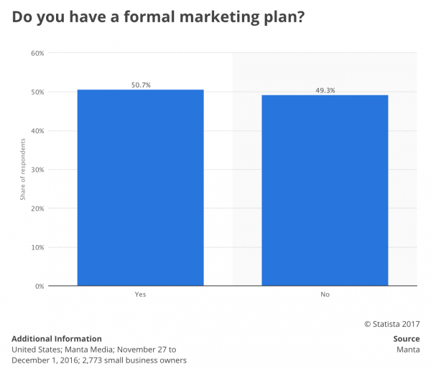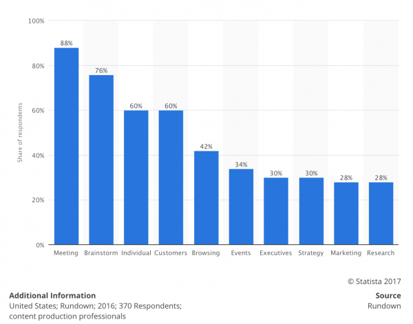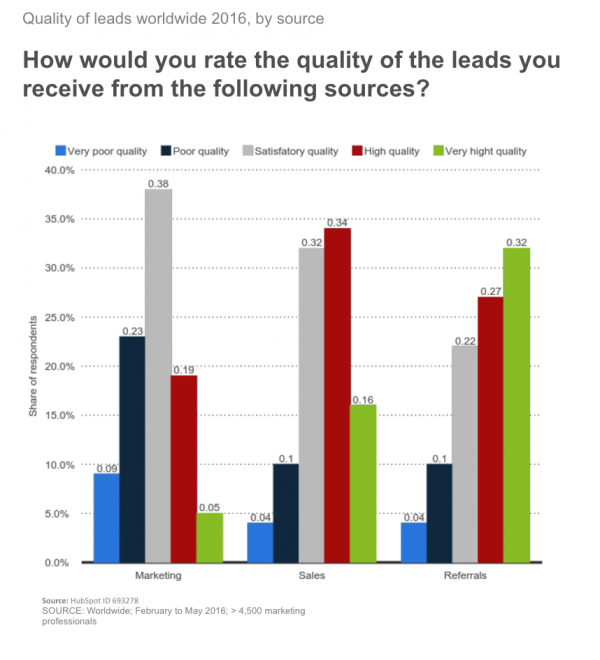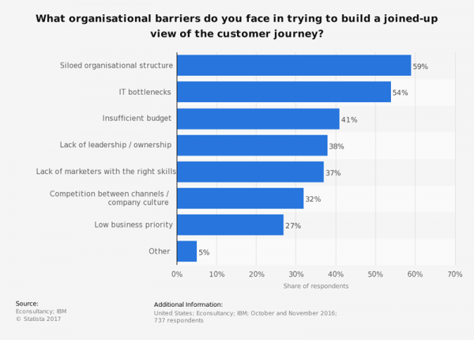
Learning from both success as well as failure is essential for modern day marketers. To this purpose, we share our perspective on the top 5 most common B2B marketing mistakes.
These lessons we learned from working with B2B organizations of all sizes, from small service companies to global enterprises focused on integrated platforms. Common mistakes often prevent B2B companies from maturing their marketing practices and aligning marketing to business needs.
5.) Focusing too closely on the bottom of the funnel
The pressure for success on both the marketing and the sales side can cause teams to bypass essential steps, such as the process of attracting leads higher up the funnel. Many marketing teams wish to short change the process in favor of immediate MQLs or SQLs by diving deep into decision-stage content.
By focusing too closely on the bottom of the funnel, content strategies are often too technical and not value focused enough. For this reason, many organizations fail to attract the right types of leads or gain leads from key decision makers. An effective B2B marketing and lead generation strategy must focus on all stages of the buyer's journey.
4.) Unrealistic goals and strategic alignment
Yes, unrealistic goals can directly contribute to failure. In addition, a lack of alignment between executives and the on-the-ground marketing team can cause a gap between the mission and the needs of marketing. According to HubSpot's State of Inbound, there's a corporate chasm forming between executives and their employees. For example, 69% of executives believe their organization's marketing strategy is effective, but only 55% of individual contributors in marketing agree.
For one, marketing teams can be demotivated by realistic goals and gain a sense that they are doomed from the start. To manage a successful marketing team, leaders must help their teams believe in their goals and visualize a path to success. Using baseline data with incremental progression can help teams achieve stretch goals while feeling motivated with shorter term gains.
There's common agreement on what the high-level objectives of marketing are today. According the State of Inbound 2017, 70% of organizations agree that converting leads to customers is the top objective. The misalignment comes with setting specific goals. Many executives set goals that are not progressive or progressively based on achievable numbers.
3.) Not having an adaptive marketing strategy
Not having a marketing strategy that adapts to new data, insights, and learnings is a common short coming of B2B technology companies. There are two parts to this common mistake: #1 - not having a strategy and #2 - not continuously adapting the marketing strategy to new insights and learnings gained from tests.
Many organizations simply do not have a strategy, to begin with. A lack of strategy leads to sporadic actions and unaligned missions. According to a Manta Media survey of US businesses, 49.3% of SMBs lack a strategy for marketing.

For many organizations that have a documented strategy, a lack of iterative and data-driven process prevents success. Data-driven marketing increases the win rate of campaigns. A strategy alone will not drive success. A winning combo is a data-driven iteration process coupled with a smart, experienced strategy.
2.) Not balancing data-driven and creative solutions.
Both data-driven decision making and creative strategy are critical to success. Focusing squarely on one or the other can lead to failure. Many marketers lack strategic processes, creative approaches, and data-driven decision making with the ideation process. According to 370 Respondents to a 2016 Rundown survey, the top sources for marketing ideas still come from meetings, brainstorming sessions, and individuals working autonomously.

Data and creative design thinking processes must play a larger role in the formation of marketing ideas. Strategy must be adaptive--continuously adaptive. Marketing playbooks and documented content plans must gain from new insights and learnings. An ongoing testing process must drive future thinking and understanding.
Outline for a marketing strategy process:
1.) Not integrating the buyers' perspectives in lead generation efforts
Understanding the buyers' perspective is vital to improving conversion rates, driving better lead quality, and closing new opportunities.

By not truly understanding the buyer's perspective, B2B organizations often attract the wrong buyer role or miss the factors that trigger conversions.
For many organizations, their marketing efforts generate leads that are not qualifying appropriately according to a HubSpot report.

The buyers' perspective is key in defining strategy, content, lead offers, and building a strong lead to sales-qualified lead nurturing process. According to the HubSpot survey, both marketing and sales teams are commonly under-performing here. According to a report by MarketingCharts and Regalix, 90% of B2B marketers feel that audience relevance is a key attribute of content marketing effectiveness.
For many organizations, there are clear barriers to understanding the customer and buyer journey. Consider this Econsultancy and IBM report that reveals the barriers to building a build a joined-up view of the customer journey and gaining a more hollistic understanding of the buyer.

Beyond technical and organization hurdles, lacking basic research practices may block many B2B organizations from understanding the needs of their buyers. Techniques like building personas, ideal buyer profiles, acquisition analysis, full-funnel analytics, and competitive messaging can help organizations improve their relevance to target prospects and buyer needs. Additionally, spending the time to understand the motivating factors of a purchase decision is essential.
We see these marketing mistakes in companies and organizations of all sizes from large enterprise teams to startups. Our hope is to shed light on these common flaws and help marketing teams drive better performance. If you found this article helpful, take a look at our article on these top 6 tools for B2B marketing.
SOURCE:
Rundown survey: United States; Rundown; 2016; 370 Respondents; content production professionals: © Statista 2017 - https://www.statista.com/statistics/623862/content-marketing-ideas-generating/
HubSpot: The State of Inbound, page 44 - worldwide survey; February to May 2016; > 4,500 marketing professionals.
MarketingCharts; Regalix: Worldwide; North America; January 9 to 20, 2015; 18 years and older; 285 Respondents; among senior B2B marketing leaders and business leaders: 72 percent of respondents were based in North America
by Jonathan Franchell, CEO of Ironpaper - For more tips and hacks: Need to remove a new line after h1 tags? Both web designers and SEO practitioners need to employ headline tags: H1, H2, H3 in several ways to improve web page structure and tag...

The Crowded Arena of the IT Marketplace Updated December 2024 The Information Technology (IT) landscape is experiencing rapid growth and intensifying competition. IT spending is projected to reach nearly 5.1 trillion U.S. dollars in 2024, a...

Updated December, 2024 The field of digital marketing is evolving rapidly in response to new technology and changing buyer expectations. To help career-minded marketers, we’ve rounded up the top 10 skills needed to succeed in the field. These are...

The marketing industry is transforming significantly due to generative AI and increasing market complexity. Gartner's prediction of a 25% decline in traditional search traffic suggests that the era of search engines is dying. AI tools, particularly...
